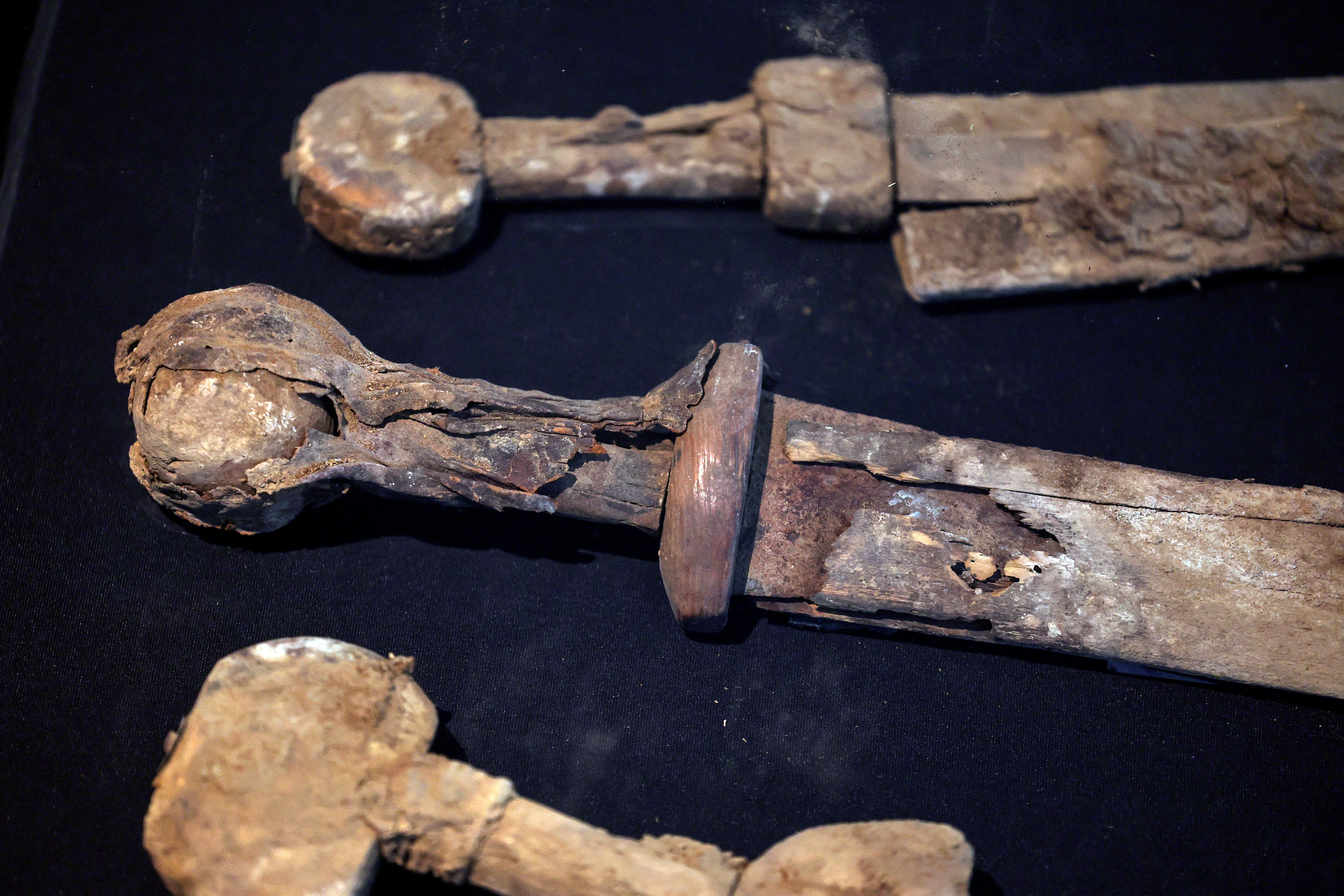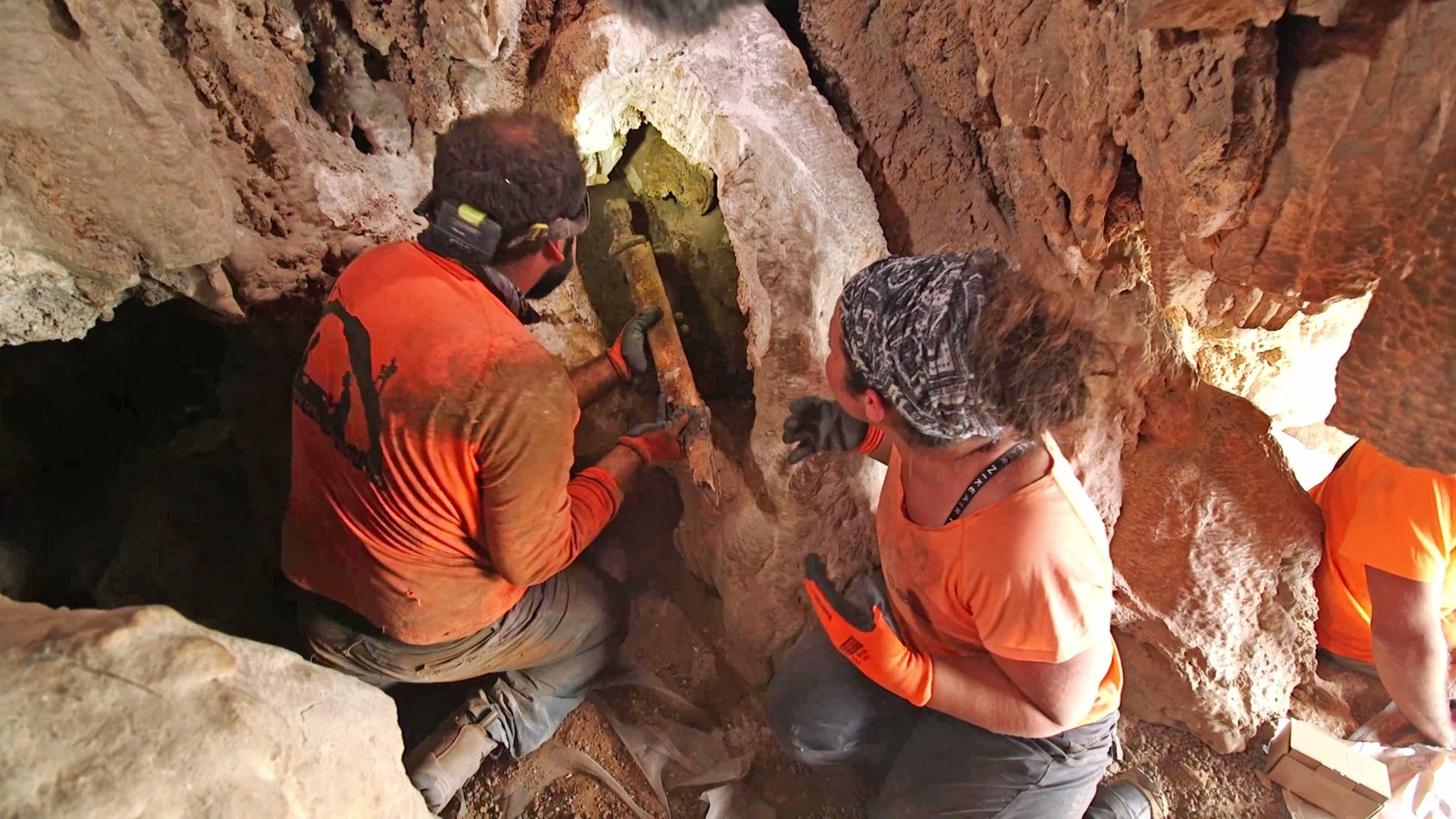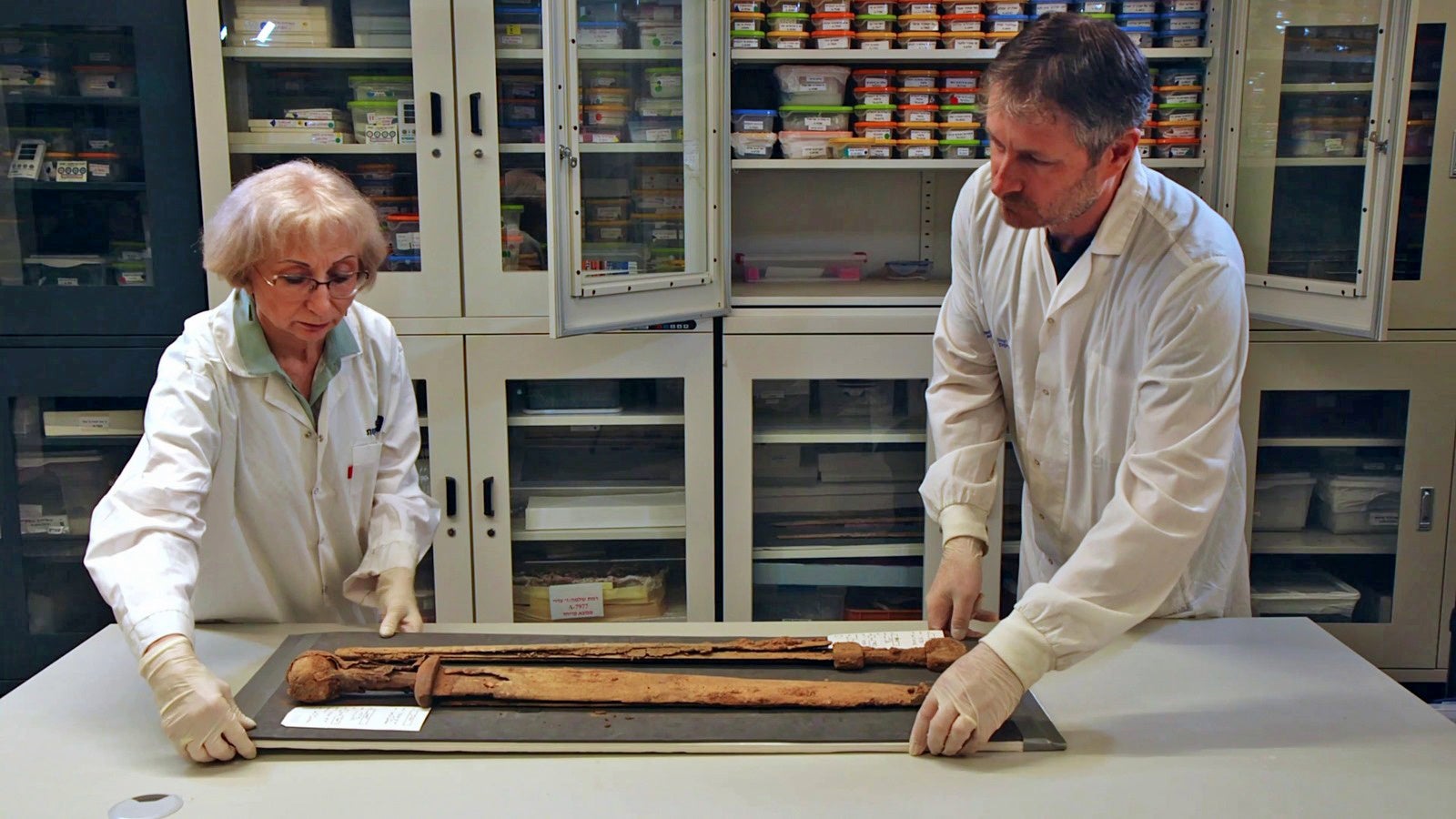‘Excellently preserved’ cache of Roman swords used 1,900 years ago found in Dead Sea cave
‘Finding a single sword is rare – so four? We rubbed our eyes to believe it’
Your support helps us to tell the story
From reproductive rights to climate change to Big Tech, The Independent is on the ground when the story is developing. Whether it's investigating the financials of Elon Musk's pro-Trump PAC or producing our latest documentary, 'The A Word', which shines a light on the American women fighting for reproductive rights, we know how important it is to parse out the facts from the messaging.
At such a critical moment in US history, we need reporters on the ground. Your donation allows us to keep sending journalists to speak to both sides of the story.
The Independent is trusted by Americans across the entire political spectrum. And unlike many other quality news outlets, we choose not to lock Americans out of our reporting and analysis with paywalls. We believe quality journalism should be available to everyone, paid for by those who can afford it.
Your support makes all the difference.A cache of “excellently preserved” 1,900-year-old Roman swords have been unearthed in a cave near the Dead Sea by archaeologists in Israel.
The swords were likely seized and hidden by rebel Jewish forces as “booty” following a battle, said researchers, including those from the Israel Antiquities Authority (IAA).
The four rare swords, of which three blades were still protected in wooden and leather sheaths, were found in a small hidden cave in an area of inaccessible cliffs north of En Gedi in the Judean Desert Nature Reserve.
A “shafted weapon” was also found in a crevice in the cave, researchers said in a statement by the IAA.
“Finding a single sword is rare – so four? It’s a dream! We rubbed our eyes to believe it,” they said.
Archaeologists initially entered the cave with the aim of photographing a Paleo-Hebrew inscription written on the stalactite, hoping it could help decipher additional parts of the inscription.

While scoping the cave’s upper level, archaeologist Asaf Gayer from Ariel University spotted an extremely well-preserved Roman pilum or javelin – a shafted weapon – in a deep narrow crevice.
He also discovered pieces of wood in an adjacent niche that turned out to be parts of the swords’ scabbards.
Returning to the cave at a later time, researchers conducted a “meticulous survey” of all the crevices and found the four Roman swords in an almost inaccessible crevice on the cave’s upper level.

The swords were found to be “exceptionally well preserved” and three of the iron blades were still inside their wooden scabbards.
Researchers also found leather strips as well as wooden and metal parts fashioned into handles for the blades.
“The length of the blades of three swords was 60-65 cm, their dimensions identifying them as Roman spatha swords, and the fourth one was shorter with c. 45 cm long blade, identified as a ring-pommel sword,” the IAA said in a statement.
Based on an initial examination, researchers said the swords were standard weapons employed by the Roman soldiers stationed in Judea in the Roman period.

“The hiding of the swords and the pilum in deep cracks in the isolated cave north of En Gedi, hints that the weapons were taken as booty from Roman soldiers or from the battlefield, and purposely hidden by the Judean rebels for reuse,” said Eitan Klein, one of the directors of the survey project.
“Obviously, the rebels did not want to be caught by the Roman authorities carrying these weapons. We are just beginning the research on the cave and the weapon cache discovered in it, aiming to try to find out who owned the swords, and where, when, and by whom they were manufactured,” Dr Klein said.

Scientists are conducting further analysis to “pinpoint” the exact historical event that may have led to the caching of these weapons in the cave.
Further excavation of the cave in its entirety has also uncovered artifacts dating to the Chalcolithic period of about 6,000 years ago.
Researchers have published details of the findings in a book titled New Studies in the Archaeology of the Judean Desert: Collected Papers.



Join our commenting forum
Join thought-provoking conversations, follow other Independent readers and see their replies
15Comments